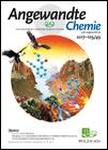版权所有:内蒙古大学图书馆 技术提供:维普资讯• 智图
内蒙古自治区呼和浩特市赛罕区大学西街235号 邮编: 010021

作者机构:Laboratory of Advanced Spectro-electrochemistry and Li-ion Batteries Dalian Institute of Chemical Physics Chinese Academy of Sciences Dalian 116023 China State Key Lab of High-Performance Ceramics and Superfine microstructure Shanghai Institute of Ceramics Chinese Academy of Sciences Shanghai 200050 China The Institute of Scientific and Industrial Research (ISIR-SANKEN) Osaka University Osaka 567-0047 Japan State Key Laboratory of Advanced Chemical Power Sources College of Chemistry Nankai University Tianjin 300071 China Clean Nano Energy Center State Key Laboratory of Metastable Materials Science and Technology Yanshan University Qinhuangdao 066004 China Hefei National Research Center for Physical Sciences at the Microscale University of Science and Technology of China Hefei 230026 China
出 版 物:《Angewandte Chemie》
年 卷 期:2024年第137卷第1期
学科分类:081704[工学-应用化学] 08[工学] 0817[工学-化学工程与技术]
主 题:Diatomic catalysts Macrocyclic precursor constrained strategy Transition-noble metal centers Oxygen evolution reaction Performance descriptor
摘 要:Diatomic catalysts, especially those with heteronuclear active sites, have recently attracted significant attention for their advantages over single-atom catalysts in reactions with relatively high energy barrier, e.g. oxygen evolution reaction. Rational design and synthesis of heteronuclear diatomic catalysts are of immense significance but have so far been plagued by the lack of a definitive correlation between structure and catalytic properties. Here, we report macrocyclic precursor constrained strategy to fabricate series of transition metal (M T , Ni, Co, Fe, Mn, or Cu)-noble (M N , Ir or Ru) centers in carbon material. One notable performance trend is observed in the order of Cu−M N Mn−M N Fe−M N M N Co−M N Ni−M N . Meanwhile, the pathway has been not altered, still following the traditional adsorption reaction mechanism. The effect of the M T atoms on the performances could possibly originate from the distinct adsorption/desorption behaviors of key intermediates (i.e. *OH, *O and/or *OOH), strongly implying that Δ G *OOH – Δ G *OH could be used as the performance descriptor. We believe that our work provides useful strategy for synthesis of diatomic active sites with sole coordination configuration and varied composition, and in-depth insight to their catalytic mechanism, which could be used for further optimization of diatomic catalysts towards oxygen electrocatalysis.